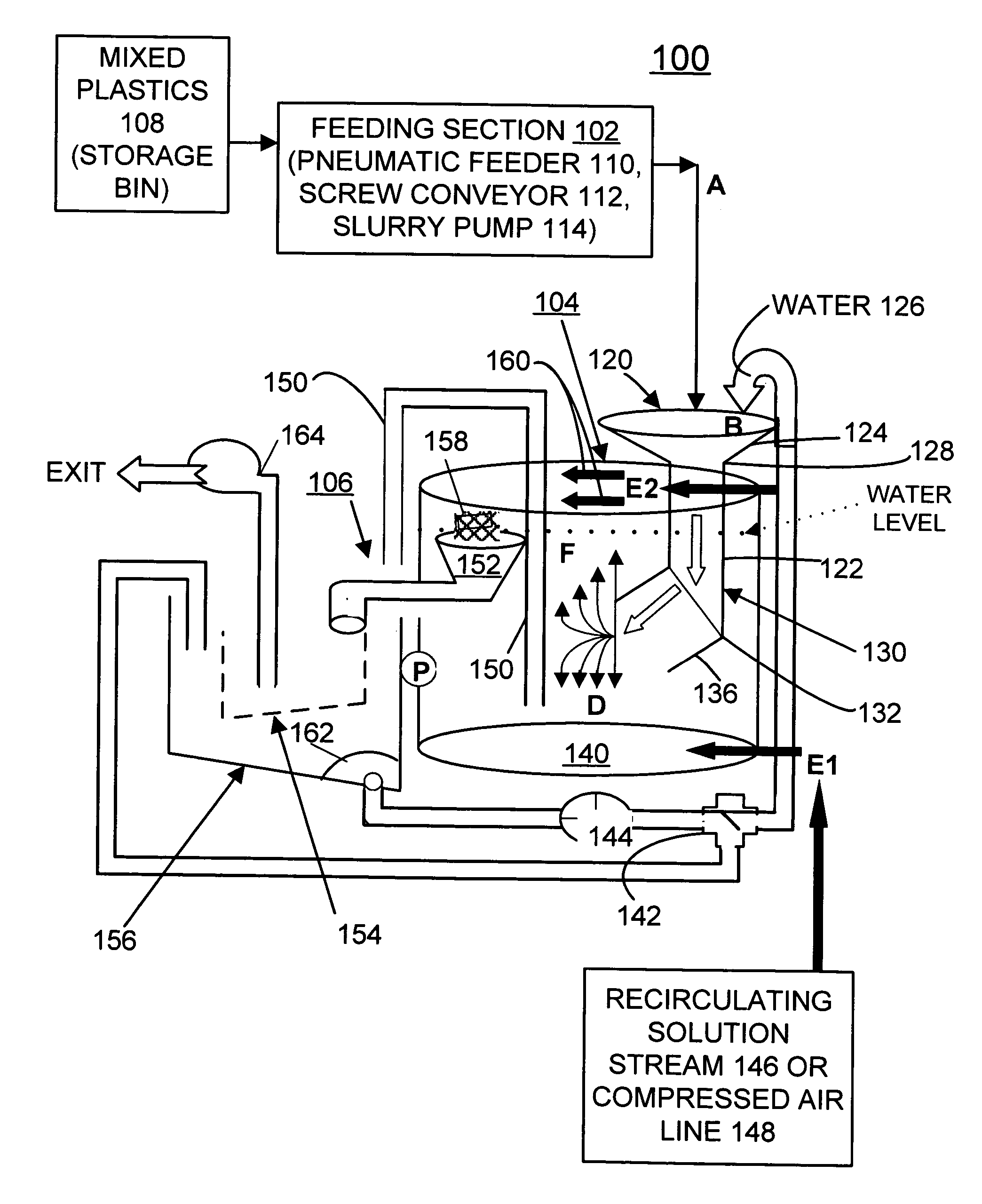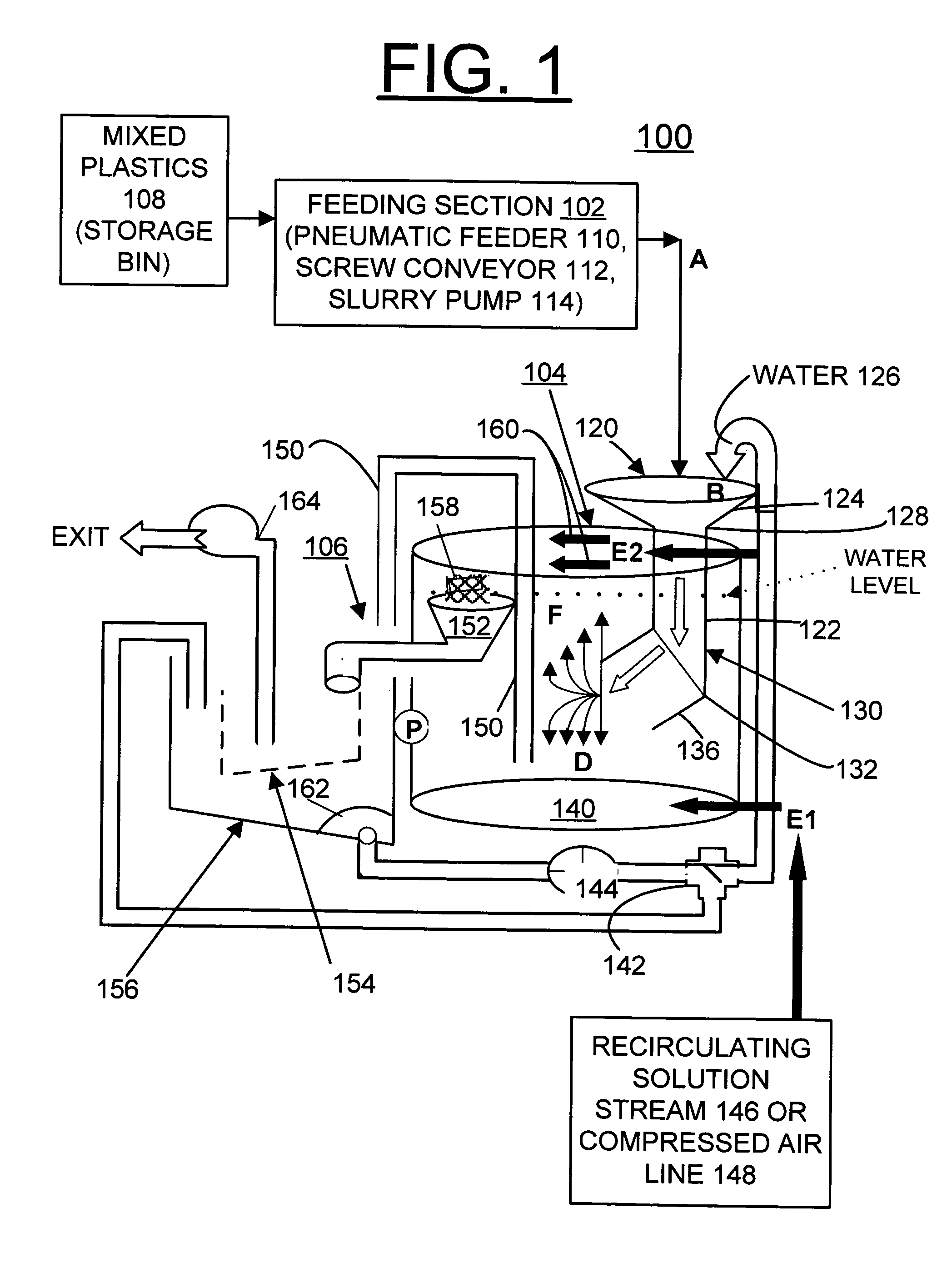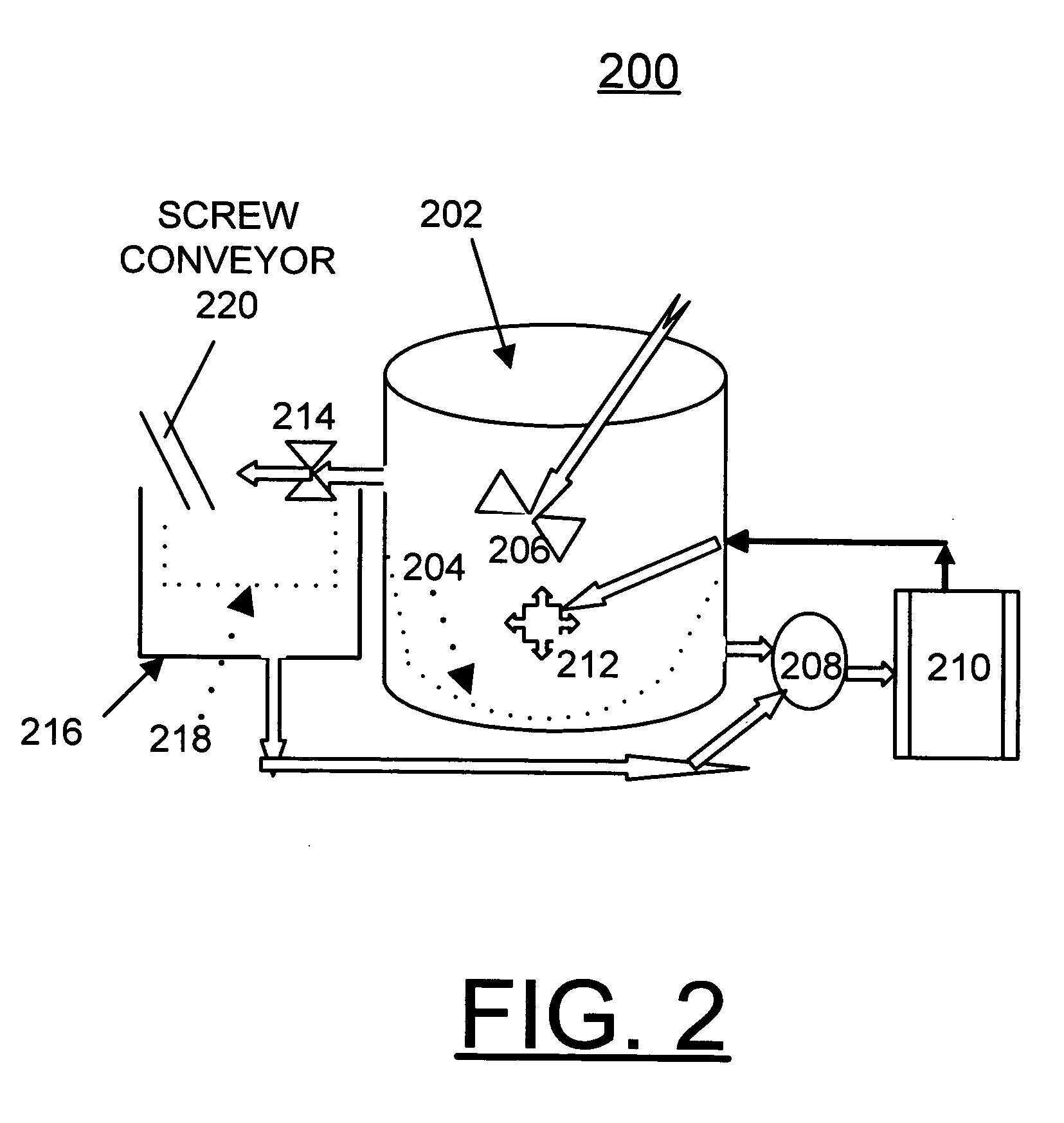Method and apparatus for separating mixed plastics using flotation techniques
a technology of mixed plastics and flotation tanks, which is applied in the direction of sedimentation settling tanks, centrifuges, separation processes, etc., can solve the problems of restricting its commercial value, and achieve the effect of enhancing the upward movement of lights
- Summary
- Abstract
- Description
- Claims
- Application Information
AI Technical Summary
Benefits of technology
Problems solved by technology
Method used
Image
Examples
example number 1
[0053] Separation of a plastics mixture containing expanded polystyrene (very low density), polyolefin films (low density) and regular polystyrene (high density) and nylon (higher density).
[0054] The objective of this experiment was to separate the polyolefins (polypropylene and polyethyle) from the mixture. The plastics mixture was slurryed in tap water (density equals 1) and pumped into the apparatus at point 1 as shown in FIG. 2 at a predetermined velocity and injection angle. (The velocity, injection angle, apparatus dimensions, solution properties, number of stations, and solids loading in the slurry are determined based on the properties of the solids present, number of species in the mixture, and number of cuts to be obtained). The light expanded polystyrene floated faster than the polyolefins and reported to the first station in the apparatus at point 2. The polyolefins were rising at a slower velocity than the expanded polystyrene and they were collected at the second stat...
example number 2
[0055] Separation of a plastics mixture derived from shredding appliances and containing rigid foam (very low density), polyolefins (low density), high impact polystyrene (HIPS), acrylonitrile-butadiene-styrene (ABS), nylons, Polyvinyl chloride (PVC) and metals (high density). The density scale was as follows: metals>PVC>nylons>(ABS and HIPS)>Polyolefins>foam
[0056] This example is similar to what is produced from shredding refrigerators. In this case the liquid solution will be the solution disclosed in U.S. Pat. No. 5,653,867. This solution has a specified specific gravity, surface tension and pH. The solution is capable of modifying the surfaces of the equal density HIPS and ABS such that the HIPS float and the ABS sinks in the same solution. The material can be injected at point 1 in FIG. 5. The rigid foam is collected at point 2. The polyolefins is collected at point 3. The slower rising HIPS are collected at point 4. The slowly sinking ABS is collected at point 7. The heavier ...
example number 3
[0057] Separation of ash and sulfur bearing compounds from pulverized coal.
[0058] The ash portion of the coal has a higher density than the hydrocarbon fraction because it contains metals, metal oxides and other salts. In addition, work done on froth flotation to separate some of the sulfur bearing compounds from pulverized coal showed a promise to reduce the sulfur content of coal. The process developed here can achieve all that in one step.
[0059] In this case the liquid solution will be the froth flotation solution, which will have the appropriate specific gravity, surface tension and pH. The pulverized coal can be injected at point 1 in FIG. 5. The high sulfur fraction can be collected at point 2. The ash would be collected at point 5. The low sulfur coal particles can be collected at points 6 and 7. This is another example that illustrates how a combination of conventional sink / float processes can be combined with froth flotation and other flotation techniques to achieve multi...
PUM
| Property | Measurement | Unit |
|---|---|---|
| surface tension | aaaaa | aaaaa |
| specific gravity | aaaaa | aaaaa |
| size | aaaaa | aaaaa |
Abstract
Description
Claims
Application Information
 Login to View More
Login to View More - R&D
- Intellectual Property
- Life Sciences
- Materials
- Tech Scout
- Unparalleled Data Quality
- Higher Quality Content
- 60% Fewer Hallucinations
Browse by: Latest US Patents, China's latest patents, Technical Efficacy Thesaurus, Application Domain, Technology Topic, Popular Technical Reports.
© 2025 PatSnap. All rights reserved.Legal|Privacy policy|Modern Slavery Act Transparency Statement|Sitemap|About US| Contact US: help@patsnap.com



